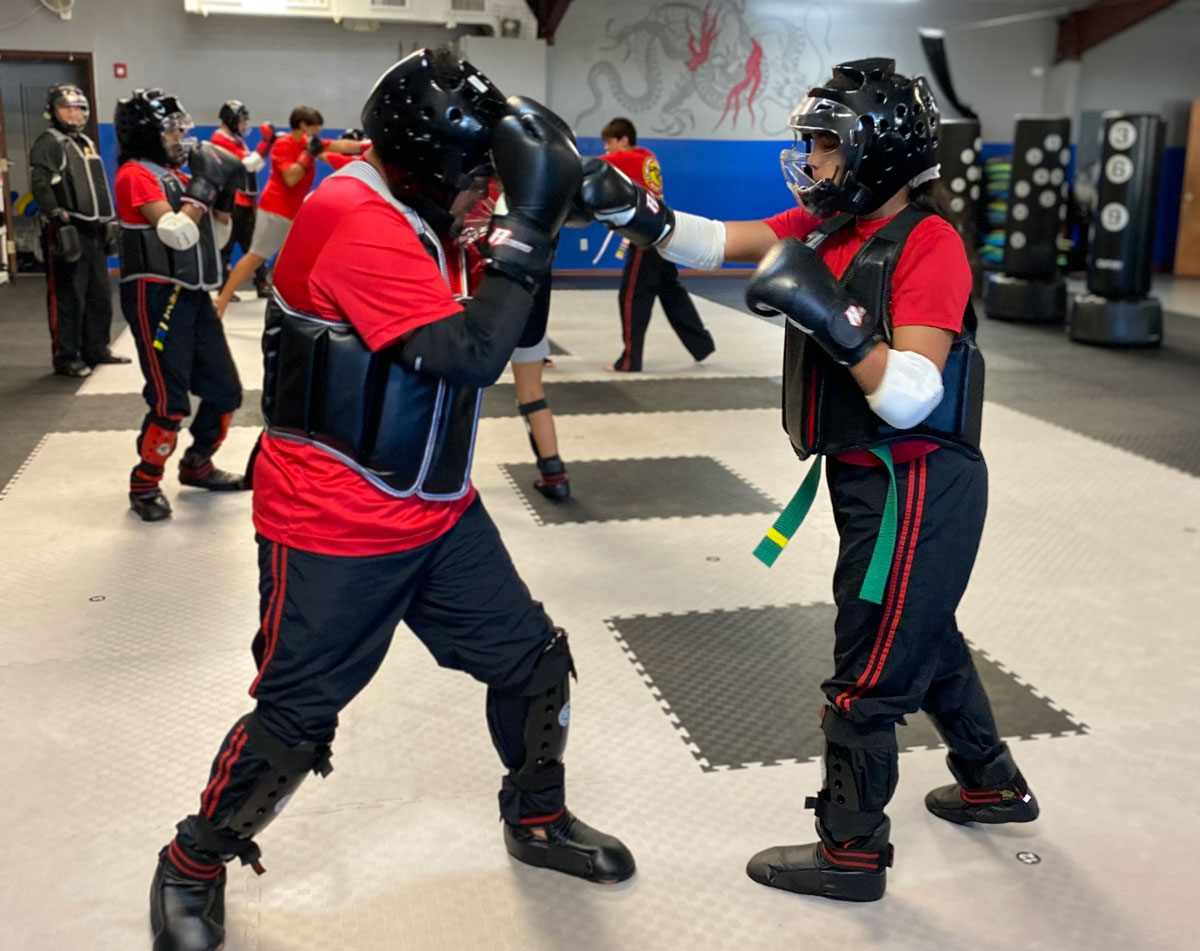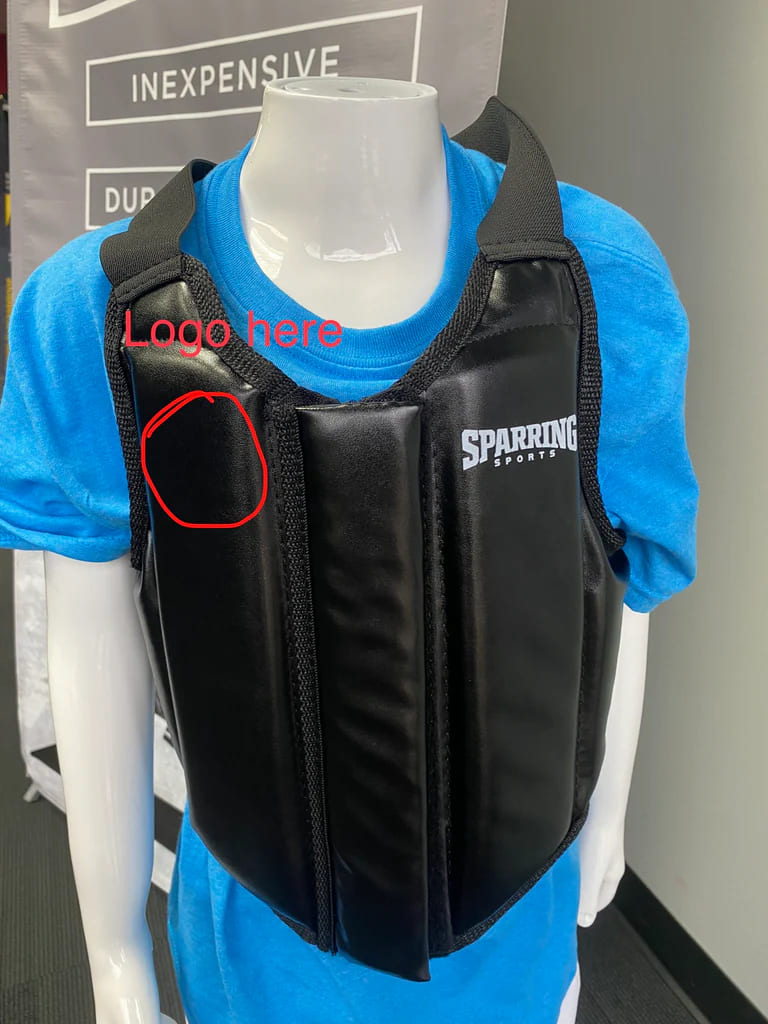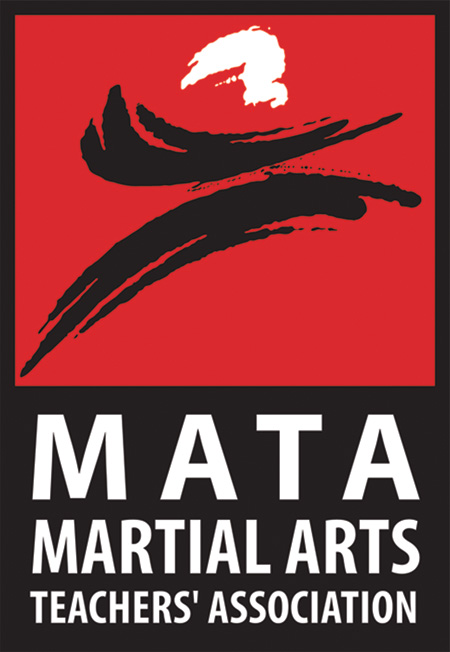
Few areas of training can define martial arts spirit more clearly than sparring. From 1984 until about 1989, I was training three times a week in a dark, dirty boxing gym with American karate legend Joe Lewis, the retired world heavyweight kickboxing champion.
The fighting was hard contact, brutal, and as intense as you can imagine it could be climbing into a 12- foot-square ring with the man cited as 'the greatest fighter in the history of karate.”
Video: Joe Lewis Pounds John Graden in Boxing Club
Joe taught me that the fighting should be as real as possible.
He also confirmed my opinion that point karate had little value in instilling the tenacity or mental conditioning necessary to go three rounds with anybody.
That was the a minimum standard for a professional black belt he taught me. You should be able to to three rounds with anyone.
That requires excellent defense, something point karate or kata does not teach.
Calibrating Champion Level Kickboxing to Students
My motivation has always been as a teacher, not a fighter or champion. I've never had a compelling drive to be a world champion or trophy collector. I've always competed for the education and experience that I can pass on to my students.
Whenever I'm in a learning environment, such as working with a great teacher or taking a personal development seminar, I am always asking myself, "How can I teach this to my students?"
In the case of fighting with Joe Lewis, the question changed to, "How do I teach this to my students without driving them out the door or to the hospital?"
In most schools, sparring is one of the leading causes of drop out among students. Even when the school sticks to the relative stop-and-go safety of point karate, students still drop out.
How, then, could I motivate these students to engage in sparring without hurting them or scaring them off?
I learned that the key is in the perspective you keep in working with your students. If your goal is to get your students to black belt, then you must realize that you have up to three years to accomplish that.
It's important, then, that you structure your curriculum to gradually introduce the student to sparring. There's no rush.
There's No Rush to Spar
Some may argue that the sooner students start to spar, the sooner they can learn how to defend themselves. My feeling is that if a student drops out because of sparring too early in his training, then he will never learn to defend himself anyway.
A student that drops out of the martial arts because of sparring is a student we have failed.
In the sparring program I developed, the first 4-6 months is spent on learning defense.
There are three defenses:
- Distance. This is backing away from the attack so it doesn't reach you.
- Blocking. When blocking, students learn how to stay in good balance so they can counter if the opening is there.
- Jam. This is meeting the attacker half way to jam up the attack.
There are four parts to an attack:
- Penetrate. This when you move towards your opponent to strike.
- Engage. This is where you are hitting, missing, or being blocked. You are engaged in the attack.
- Clear. This is retreating to open distance from your opponent.
- Change position. This is changing your alignment so your opponent has to readjust which buys you time.
Everything we do includes the four parts of an attack.
The four parts to an attack is the foundation of every drill, slipping drills, target drills, defensive footwork drills, and set-point movement drills to get them moving and firing techniques.
Understand that this represents the first six to eight months of their training.
Often, instructors have their students sparring within the first three months. Our students don't even make contact for three months following the rules of light-contact kickboxing.
However, there is still no head contact, but body contact is permitted. The students wear headgear, hand-and-foot protective pads, shin pads, a mouthpiece, rib guards, and a groin cup for the guys.
Rib guards are super important because students getting the wind knocked out of them is easy and common, and it really hurts. Mitigate that with rib guards.
Rib guards are critical for beginners because getting the wind knocked out is a terrifying experience to many students.
This is from SparringSports.com
Limited Sparring Drills
At this point, we begin to devote more and more of each class to limited sparring drills. A limited sparring drill is a sparring match with a strategy other than winning as the goal.
For these drills we always target the forehead instead of the face, as a safety measure.
As an example, one student is limited to executing only a jab to his partners’ forehead. The student's partner is limited to using only positional movement (footwork) and head movement as a defense.
Video: How to Teach Fighting Stance and Head Movement
So, in this example, the jabber is working on stepping in and snapping his jab to the forehead, while the defensive fighter is learning to slip and move against an attack.
In the next round, we have the defensive fighter add hand traps to his defensive choices.
For round three, we may slow things down slightly and place the defensive fighter with his back against a wall to prevent him from moving from his opponent.
The final round could allow a counter technique to be thrown.
By limiting the choices, we're preventing the fighters from being overwhelmed by trying to figure out on their own what to do.
At the same time, they are actively, enjoyably and safely engaged in a sparring-like exercise. The end result is, the defensive fighter gains confidence in avoiding contact. He learns how NOT TO GET HIT.
You can see within this scenario that there is no winner or loser. Instead the students are taught to judge the match by how well they stuck to the strategies of the drill.
Teach Students How to Communicate with Each Other
While the majority of the class time devoted to sparring is spent on limited sparring drills, we will allow the students to go a round or two of free-sparring under strict black belt supervision.
The matches always begin with the students introducing themselves and shaking hands with their partner and a verbal review of the sparring attitude towards each other, which is, "I'll make sure you don't get hurt."
Also, explain to the students that while control is required and demanded, they are going to get accidentally whacked on occasion just as they are going to whack someone else. Teach them exactly how to inform their partner if the contact is too hard.
You can even talk to them about the tone of the request to lighten up. An angry demand may elicit a different response than a respectful but firm request.
Respect and courtesy are the key attitudes. Make sure that the person being requested to lighten up is taught that "Yes ma’am" or "Yes sir" are the only acceptable response.
Only the person getting hit can determine the contact level and he cannot be questioned.
Graduating to Head Contact
After an additional three months in that class, the students graduate into the blue and red belt level.
At this point, they are allowed to make light head contact in addition to moderate body contact to the rib-guard area.
You may think that this is a long time to wait to spar with head contact. I think many of your students might disagree with you. I would also argue that your students have a lifetime to spar from that point on.
Take good care of your students and nurture them along to ensure they are going to be part of your school and part of our martial arts family for a very long time. When they enroll, they are investing a lot of trust in your leadership and guidance.
Few areas of the martial arts can be as confusing or intimidating as sparring. Keep a long-term black belt-oriented perspective on training your students and you will have a much better chance of having them stick around to successfully achieve that goal -- and more.




